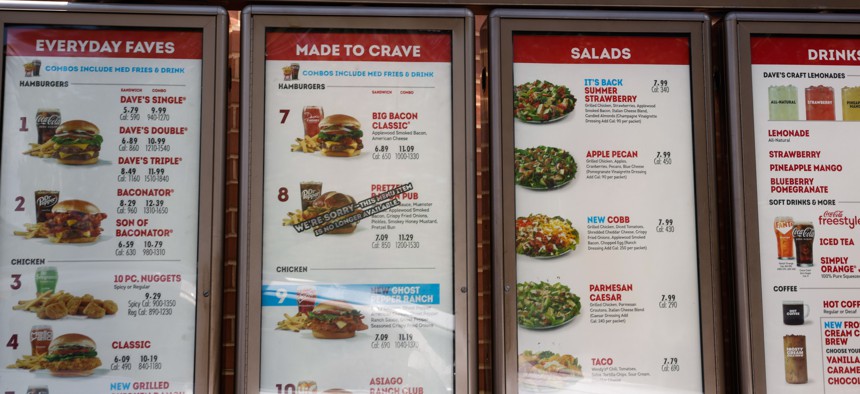A new proposal from Wendy’s had fast food lovers in a tizzy this past week. The square burger chain announced it would unveil “dynamic pricing” in 2025 that would alter the cost of food based on customer demand. After massive outcry, they’ve since backtracked but Assembly Member Angelo Santabarbara still plans to push forward with legislation that would ban similar practices.
“The use of artificial intelligence technology to calculate when surge pricing is going to occur, it's really opened up consumers to potential exploitation and manipulation by this technology and so these business practices, when it comes to the food industry, it's something that needs oversight,” said Santabarbara. “In this case, it's something that we shouldn't allow altogether.”
For New Yorkers who reside in “food deserts,” proposals like Wendy’s could be catastrophic. “Food deserts” are areas where access to nutritious food is unavailable or difficult to obtain because of distance or cost limitations. Affected New Yorkers usually have to rely on fast food or other pre-prepared meals instead. Sue Lintner, executive vice president of equitable access and advocacy at the Regional Food Bank of Northeastern New York, said that those living in poverty are often most affected by “food deserts” and rising fast food costs only serve to “drain the dollar” more.
“Quite frankly, people in food deserts are disproportionately affected by high food prices,” Lintner added. Sometimes the trickle-down effect begins with not being able to afford a car.
“In the south end of Albany, someone has to get on a bus, and travel eight miles to a Walmart grocery store to pick up groceries, or take another bus to another grocery store,” Lintner told City & State. “I'm a mom of two kids, this would take me three hours out of a day, on a good day, from transportation alone.”
According to a 2018 Tufts University analysis, all of New York’s regions have food deserts, including some that they assessed were in dire need of more grocery options. Living in a “food desert” is associated with a shorter life span according to a study published in the Journal of Urban Health.
Santabarbara said that in less extreme cases, the problem is that people would be receiving a surcharge essentially for going to lunch. With affordability already an issue he said that such a practice would be unfair to New Yorkers and worse – replicable.
“If you're going to be able to just randomly charge people more based on when they're likely to come in, that seems very unfair to segments of our community, very unfair,” Santabarbara said. “I think it's a concern that if Wendy’s goes through with this, who's gonna do it next–is it going to be a grocery store?”
New York has a broader food crisis underway. The state Department of Health published a study last December reporting nearly 25% of adult New Yorkers experienced food insecurity. Local levels varied by county with Bronx County leading the state at 39% of adults.
Feeding New York State Advocacy Officer Ryan Healy said the problem may not look the same throughout New York but it is ever-present. In a rural area, he said that might mean a low-income New Yorker going to a Dollar General instead of Whole Foods but in New York City, “communities like the Bronx where bodegas and convenience stores vastly outnumber grocery stores, it manifests itself in different ways.”
“The core of it,” Healy said, “is folks have more convenient access to cheaper processed and unhealthy foods, and less access to healthier produce options that support their long-term health and well-being.”
Assembly Member Jessica González-Rojas and other lawmakers have put forth policies to address the issue, like expanding free school lunches or increasing benefits from the Supplemental Nutrition Assistance Program in this year’s budget. Healy said the savings from the programs could save families thousands hundreds of dollars depending on household size.
Santabarbara’s legislation is in its early days. However, the Capitol region lawmaker said he’d received word from Deputy state Senate Majority Leader Mike Gianaris that he’d like to review the bill and Wendy’s also reached out to discuss the situation.
“I'm not typically a fast food person but I certainly wouldn't be going to Wendy’s at this point,” Santabarbara said.

NEXT STORY: New York’s legislative moms come out against school district funding cuts


